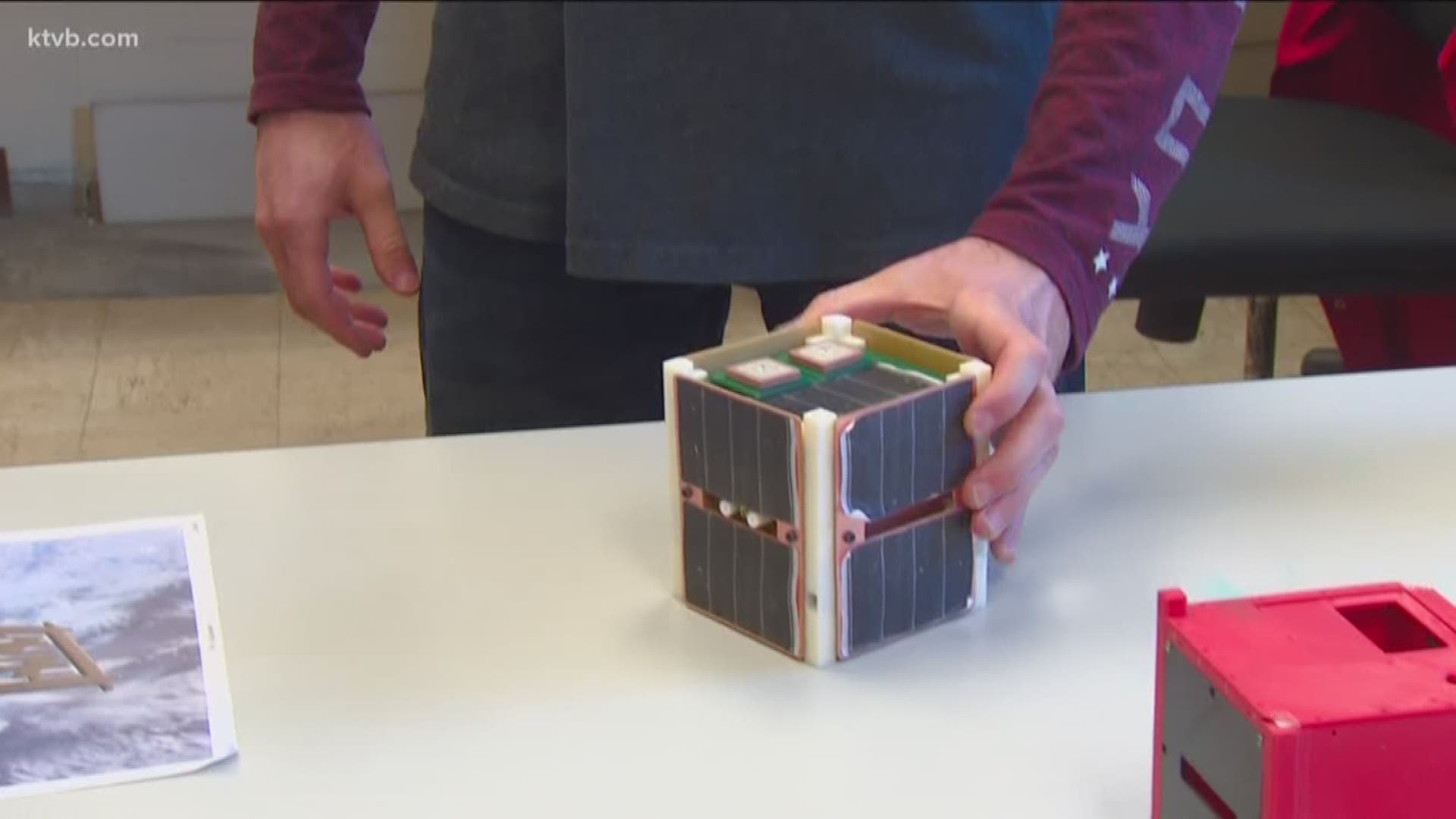NAMPA -- Idaho students are playing a big role on the international space stage and making history for designing the first ever satellite to be built in space, created by a 3-D printer.
Faculty and students from Northwest Nazarene University and Caldwell High School are partnering with NASA and preparing to launch two satellites over the next few months. Their project is called MakerSat and is Idaho's International Space Station-based CubeSat Research Platform.
Students and faculty have been working tirelessly to get their two missions into space. The first MakerSat will launch in November, and the second is expected to launch in January of 2018.
It's all thanks to a NASA Idaho Space Grant Consortium research grant and a crucial technology development partnership with a company called Made In Space Inc., as well partnerships between the Center for the Advancement of Science in Space (CASIS), bSpace in Boise, and of course, NASA.
"It's great, it's exciting," NNU Engineering professor and faculty lead Dr. Stephen Parke said. "This is a great opportunity for undergrad students to do some really life-changing work," Dr. Parke said.
The 4-inch, cube-shaped satellite is designed by NNU undergraduate students, and the frame structure will be created by a 3D printer and assembled by a snap system at ISS. The inside of the satellite - containing the electronic boards with radios, batteries, power system and their science experiments - will be launched on-board a rocket. Its mission is to be deployed into Earth's orbit directly from the International Space Station.
"3D printed on the ISS, then we'll send up these six assemblies on a re-supply mission," former NNU student and project lead, Braden Grim, told KTVB.
Before this, entire CubeSats have only been launched into space on-board rockets or capsules - and they have to be built to withstand that launch. That's how NNU and Caldwell High School's first satellite, MakerSat-0, will work. That satellite is sitting in a pod launcher in a rocket at Vannenburg Air Force Base in the central coast of California, waiting for launch in November.
"MakerSat-0 is a preliminary proof-of-concept mission that basically uses the standard built on Earth approach," Parke added.
But because MakerSat-1 will be assembled in space, NNU engineering professor and faculty co-lead, Josh Griffin, says it can be made differently.
"It can be a weaker frame and therefore less expensive and lighter to build because it doesn't have to survive a launch," Griffin said.
"That structure can be printed on demand right in the space station when it's needed, right before the satellite is needed to be deployed," Parke added. "You can actually make a new space experiment on-demand and deploy it very simply from the space station."
Both satellites will host different science experiments from NNU students and from Caldwell High students.
"It's tiring but it was cool," Caldwell High School senior and lead high school student engineer, Chris Lile, said, "and what other high school gets to launch a satellite into space?"
The experiments will test how different 3D-printed polymers and plastics degrade and lose mass, or react to radiation in space. Students and faculty will analyze data sent back from the satellite, ultimately, to determine what can be manufactured in space.
"We're trying to manufacture in space instead of on the ground," Grim said. "It's been an incredible experience."
A monumental step in science and innovation, from Nampa, Idaho, to the final frontier.
"We hope it inspires them and encourages them to pursue such things in their future," Griffin added.
The university is taking the team of NNU and Caldwell High students and their families to the MakerSat-0 launch in California in November. Again, the electronic boards that will go inside MakerSat-1 will likely launch into space in January.
We are told MakerSats-0 and 1 will orbit the north and south poles 14 times a day for eight years, so NNU will be following these missions for quite a while.

